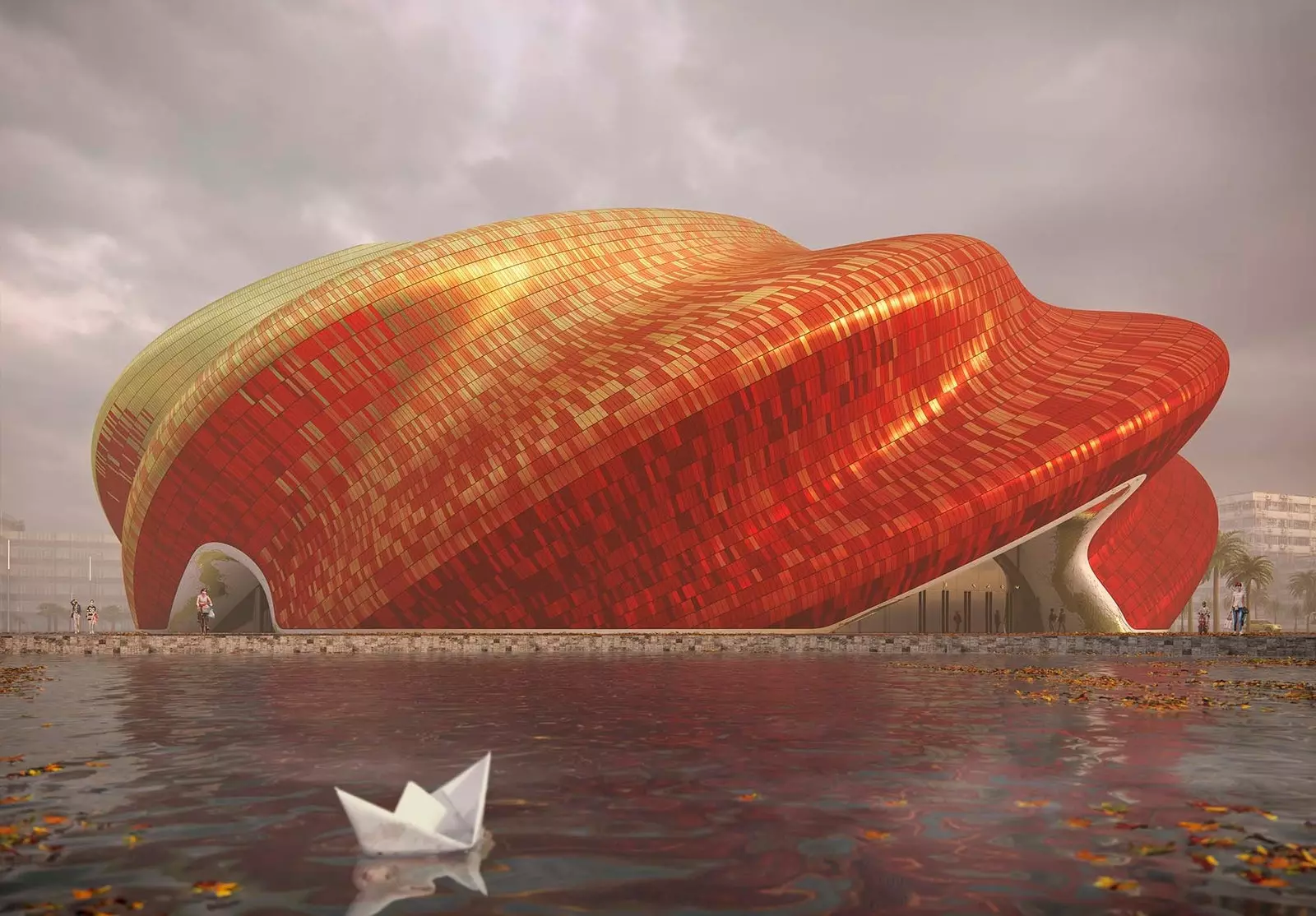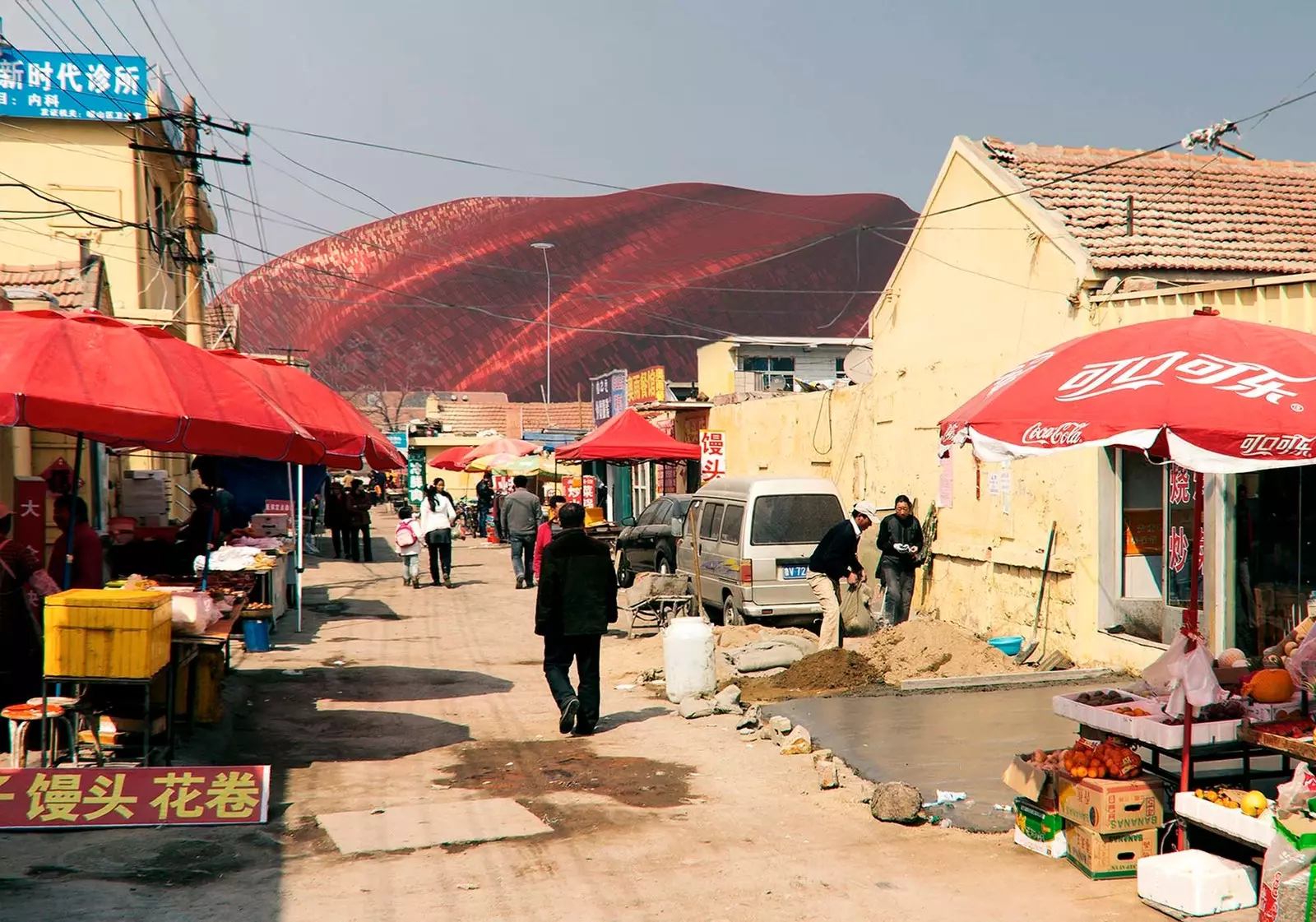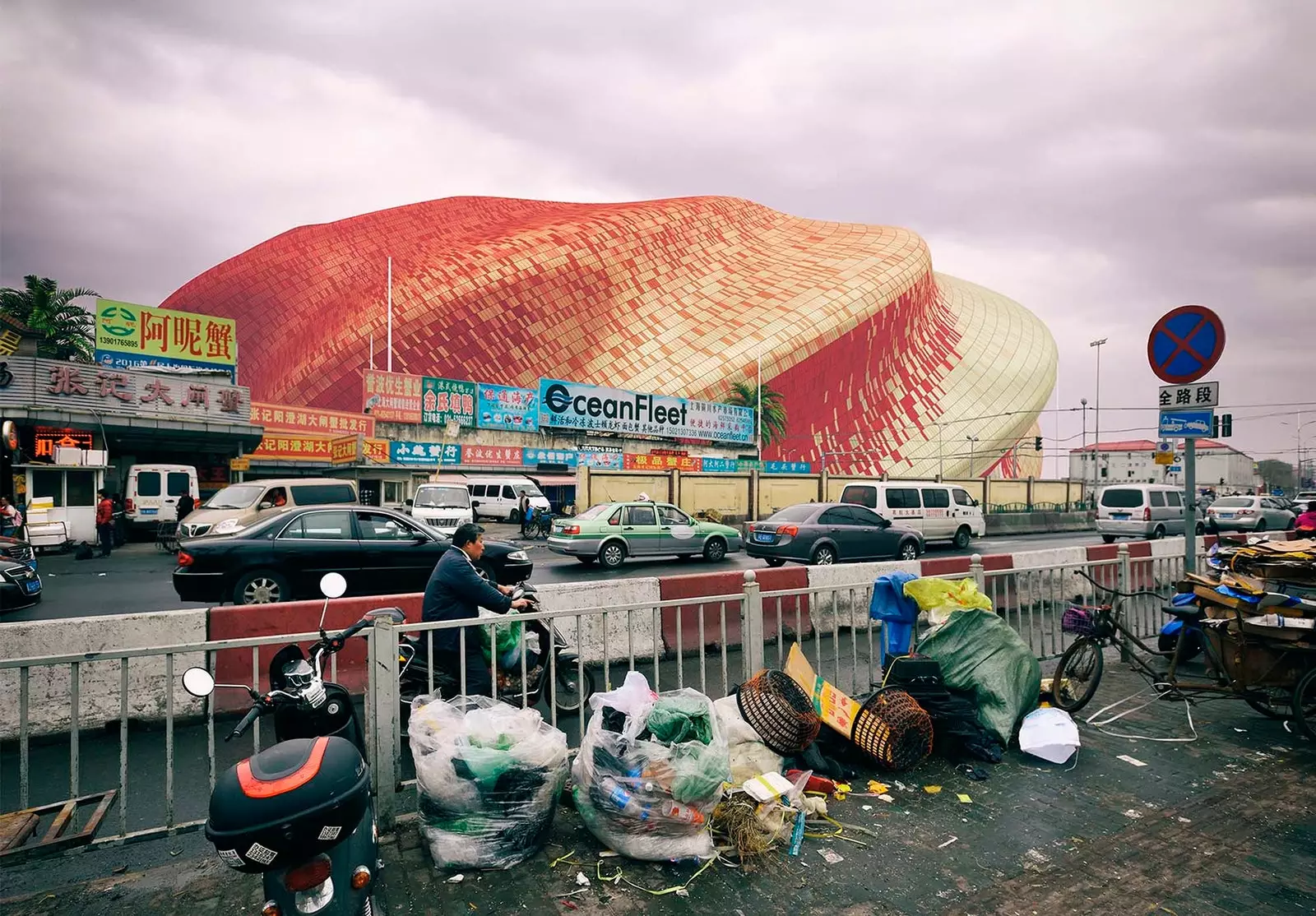
Gold and red pleats to emulate a silk scarf in the wind
Is China the new United Arab Emirates? The country has become the testing ground for the most avant-garde architectural trends, and seems to have adopted the architectural studio of Steven Chilton to sign some of its most groundbreaking buildings. These London professionals have already opened a theater in the country that looks like a bamboo forest, and another that looks like a paper lantern, in addition to having some more inspired by national concepts in the pipeline, such as the puzzle ball.
It all started in 2010: "My association with these cultural projects in China began when I created a conceptual design for a theater in Wuhan on behalf of Mark Fisher Studio. The project was commissioned by the Wanda Dalian Group, and was the first in a series of theaters they would build as part of their Cultural Tourism initiative," Chilton recalls for Traveler. "We established SCA five years ago, and in that time we have been fortunate to continue to work in the area of cultural entertainment in China for clients looking for projects that reflect local history and culture through thoughtful modern design".
This approach has been the one used to project the new guangzhou theater , inspired by silk, "a fabric known for its exquisite texture and rich historical significance," according to the company.
A THEATER THAT EMULATES A PIECE OF SILK IN THE WIND
"Silk was first developed in China, with the earliest examples dating to before 3,500 B.C. Due to its beautiful texture and sheen, it became a staple of pre-industrial international trade and fostered the creation of routes between Europe and Asia that we now know as the Silk Road", continue the architects. " Guangzhou is the birthplace of the Silk Road on the sea , and has been one of the most important trading ports since the Qin/Han dynasty."

The new building will have a curious integration into the landscape, according to the 'renders'
The new building, which will be inaugurated at the end of the year, is made up of ten gently curved and twisted folds they have been designed to evoke the drape and texture of a silk scarf. In addition, the anodized coating evokes the shine and luster of the fabric , while the dominant red surface achieves richness and depth through the use of a variety of tones and textures. Thus, the folds are emphasized through the use of darker tones in the downward-facing areas, which darken as the sun rises, while the south-facing cladding area is predominantly made of high-grade anodized aluminum panels. gold color, to help reflect heat away from the building.
"Guangzhou has a humid subtropical monsoon climate, characterized by very hot summers and high UV radiation," Chilton tells Traveler. "In response to this, the building has relatively small areas of exposed glazing, and most of it is protected from direct sunlight by perforated rainscreen liner that surrounds the building. By reducing the impact of solar radiation, we have been able to significantly reduce the HVAC loads - that is, heating, ventilation and air conditioning - in the building and also greatly reduce its carbon footprint."
The combination of gold and red panels, by the way, is not accidental: it alludes to the classic color mix found in modern and historical silk garments.
Inside, the theater is designed to accommodate 2,000 people , and it is adaptable to be used by both theater and television companies, to act and broadcast. "The external appearance of the theater has not undergone any changes due to the pandemic, as it was completed before the Covid-19 outbreak. Internally, however, although the structure of the building remains the same as originally proposed, the layout of workspaces, backstage and entrance halls yes have been adapted to allow safe operation , in accordance with local requirements", concludes the architect.

The characteristic folds of the surface will serve to make the new theater more eco-efficient
